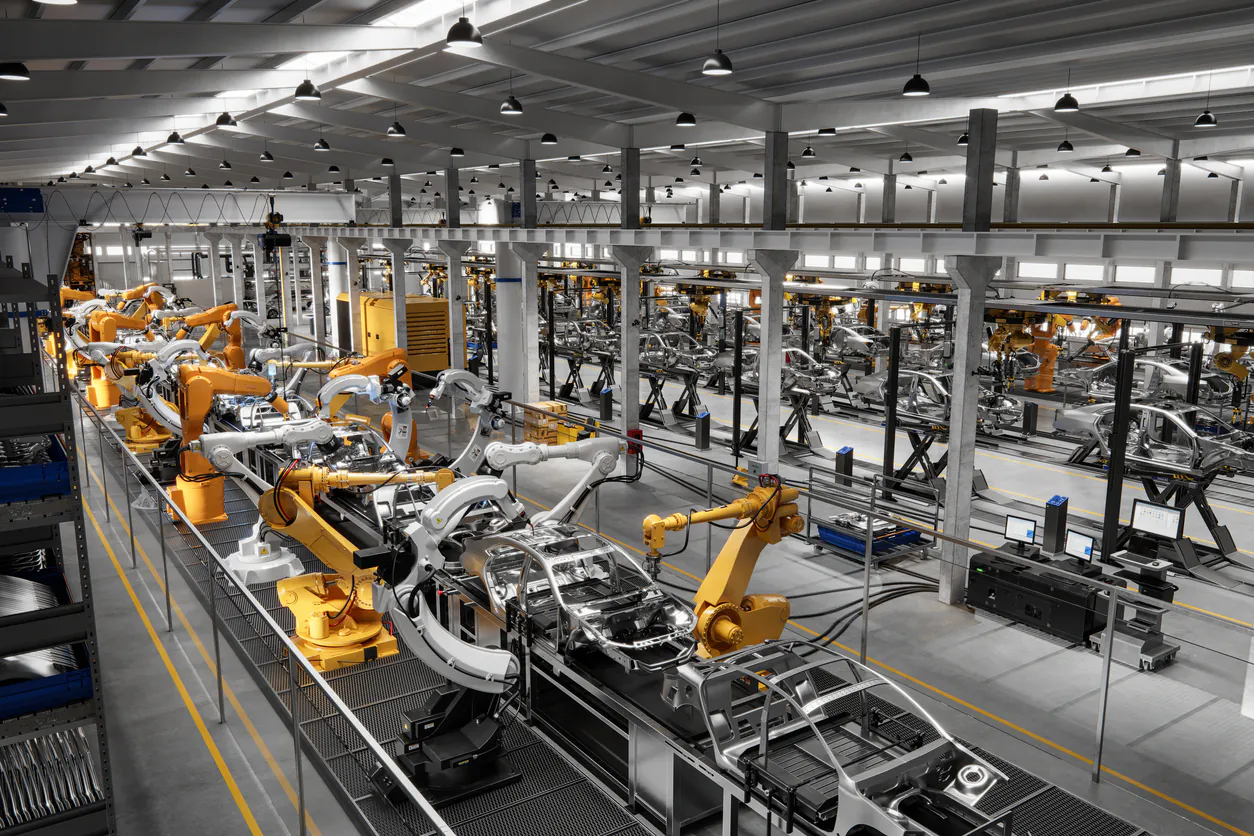Introduction
Fabricated Metal Product Manufacturing is a process of creating metal products through various techniques such as cutting, shaping, welding and joining different parts together to create a finished product. The industry produces a vast range of products that are used in various sectors such as construction, automotive, aerospace, defense and energy industries. In this article we will explore the process of Fabricated Metal Product Manufacturing and its significance in the economy.
Definition of Fabricated Metal Product Manufacturing
Fabricated Metal Products are goods made from metal that have been transformed into intermediate or end products through some sort of fabrication process. The manufacturing process involves transforming raw metal materials into finished goods by shaping them into specific shapes or forms. The finished goods can include diverse products like boilers, tanks, structural steelwork for buildings or bridges, cutlery and hand tools among others.
Importance of Fabricated Metal Product Manufacturing in the economy
The manufacture of fabricated metal products is crucial to the economy because these products have widespread applications across many industries. The industry contributes significantly to economic growth by creating jobs for millions of people around the world while generating significant revenue for businesses involved in manufacturing fabricated metal products. It also plays an important role in supporting other key sectors such as engineering, construction and transportation.
Brief history of Fabricated Metal Product Manufacturing
The history of Fabricated Metal Production goes back thousands of years when humans first began working with metals like copper and iron. In ancient times metals were used primarily for weapons and armor; however, over time their use expanded to other areas including domestic tools and utensils.
As technology improved over time so did processes for working with metals such as casting techniques which enabled mass production. Today’s industry has evolved tremendously since its origins; it has become more complex with sophisticated technologies like computer-aided design (CAD) software and robotic welding technology that have streamlined the process of manufacturing fabricated metal products.
Types of Fabricated Metal Products
Fabricated metal products can be found in many different forms, ranging from simple hand tools to complex machinery and structures. The following are some of the most common types of fabricated metal products:
Structural Metal Products
Structural metal products include a wide range of items such as beams, columns, trusses, and other supports. These are used in the construction of buildings, bridges, and other large structures. They are typically made from steel or aluminum and must meet strict specifications for strength and durability.
Forging and Stamping Metal Products
Forged metal products are made by heating a piece of metal until it is malleable and then shaping it under pressure using a hammer or press. This technique is used to produce items such as gears, crankshafts, and connecting rods for engines.
Stamped metal products are made by pressing flat sheets of metal into various shapes using dies. This process is used to produce parts for automobiles, appliances, and many other applications.
Cutlery and Hand Tools
Cutlery includes knives, forks, spoons, scissors, and other utensils used for cutting or serving food. Hand tools include hammers, screwdrivers, pliers, wrenches, saws and other implements used for manual work. These items may be simple in design but require precision manufacturing techniques to ensure their effectiveness.
Architectural and Ornamental Metal Products
Metal is often used in architecture as an aesthetic element or for added strength. Architectural metalwork can include railings on stairs or balconies as well as ornamental gates or door frames. Decorative sculptures or artwork can also be produced from fabricated metals such as copper brass or bronze.
Boilers, Tanks, and Shipping Containers
Fabricated metal products are used extensively in the production of boilers and tanks used for storing liquids or gases. They must be manufactured to withstand high pressures and temperatures to ensure safety. Shipping containers are also made from fabricated metal and must meet strict standards for durability and security.
Overall, fabricated metal products play a crucial role in many industries, providing solutions for both practical and aesthetic needs. From large-scale structural components to small hand tools, the versatility of fabricated metals ensures that they will continue to be an integral part of our modern society.
The Process of Fabricating Metal Products
Designing the product
Designing the product is the crucial starting point of fabricated metal product manufacturing. The process involves creating a blueprint or 3D model of the final product using computer-aided design (CAD) software.
The designer works closely with engineers and clients to ensure that the final product meets all specifications, including material type, dimensions, and functionality. This step requires careful attention to detail as any errors in design can significantly impact the final result.
Cutting the metal
Once the design is complete, it’s time to cut the metal into specific shapes and sizes. Metal cutting can be done in several ways, including sawing, shearing, or using plasma or laser cutting technology. Each method has its advantages and disadvantages depending on factors such as metal thickness, shape complexity, and project volume.
Forming the metal into desired shapes
After cutting, it’s time to form the metal into different shapes according to the design specifications. Depending on the project requirements and types of metals used, various forming techniques such as bending, rolling or pressing may be applied.
Welding or joining different parts together
Once all parts are formed according to design specifications they are then joined together by welding or other types of joining processes like bolting , riveting etc.to create a finished product.The materials used in welding may vary from MIG,TIG,Weld overlay etc based on geometry ,material ,joint type etc.
Finishing touches such as painting or coating
The last step in fabricating metal products is adding finishing touches like painting/coating.It provides durability,cost effectiveness,safety properties against corrosion .The surface preparation before applying coatings have significant effect on adhesion properties for coatings.There are many types of finishing options available, from powder coating to polishing. These processes help protect the metal product and enhance its aesthetic appeal.
Technologies Used in Fabricated Metal Product Manufacturing
A. Computer-Aided Design (CAD) softwareThe use of Computer-Aided Design (CAD) software has revolutionized the way fabricated metal products are designed and manufactured. This technology allows designers to create detailed 3D models of products, which can be easily modified and optimized before the manufacturing process even begins. With CAD software, it is possible to detect any flaws in a design, make necessary design changes, and simulate various manufacturing scenarios to optimize the final product’s performance. CAD software also provides an easy way for manufacturers to communicate their designs with customers or other team members. The benefits of using CAD technology in fabricated metal product manufacturing include increased accuracy, better control over the production process, reduced time-to-market, and cost savings.
B. Computer Numerical Control (CNC) machinesComputer Numerical Control (CNC) machines are widely used in fabricated metal product manufacturing because they offer unparalleled accuracy and precision. CNC machines use computer programs to control machinery operations such as drilling, milling, cutting or welding metals according to precise specifications inputted by engineers using CAD files. CNC machines have replaced traditional manual machining methods that were less precise and required more time-consuming processes like jigs and fixtures setups for each part created manually by hand tools that required more skill from operators but was much slower in producing parts than CNC machines which can produce several identical parts all at once without any variation between them.
C. Laser cutting technologyLaser cutting technology is widely used in fabricated metal product manufacturing because it provides clean cuts with high precision while reducing waste materials significantly compared to traditional methods like sawing or shearing where a lot of scrap is generated due to uneven cuts made using these methods.. Laser cutting uses a high-powered laser beam guided by mirrors which vaporize metals with high intensity and accuracy, producing smooth, clean cuts. Laser cutting machines can cut a variety of metals such as steel, aluminum, and titanium. The benefits of using laser cutting technology in fabricated metal product manufacturing include increased precision, higher production speed, and reduced waste materials.
D. Robotic welding technologyRobotic welding technology is becoming increasingly popular in fabricated metal product manufacturing because it offers precise welds with high repeatability while reducing labor costs significantly compared to traditional manual welding methods that require skilled welders but are much slower at producing parts than robotic welding machines which can produce several identical parts all at once without any variation between them. Robotic welding systems use computer programs to control machinery operations where the robot arm holds the torch and wire feed with high accuracy while following the path programmed by an engineer using CAD files. The benefits of using robotic welding technology in fabricated metal product manufacturing include increased speed of production, improved quality of welds due to less human error, and cost savings on labor.
Key Players in the Industry
Top companies in fabricated metal product manufacturing
The fabricated metal products industry is comprised of a large number of manufacturers, ranging from small, single-location companies to global conglomerates. However, there are several top players that dominate the industry and have a significant impact on the market.
One such company is Caterpillar Inc., which specializes in producing heavy equipment for construction and mining industries. The company’s products include bulldozers, excavators, and loaders made from fabricated metal parts.
Another major player is Boeing Company, which produces commercial aircraft like the 747 and 787 Dreamliner that rely heavily on fabricated metal components. Other notable companies in the industry include General Electric Company (GE), United Technologies Corporation (UTC), and Honeywell International Inc. These companies specialize in producing fabricated metal products for a range of industries including aviation, defense, and energy production.
Emerging players in fabricated metal product manufacturing
While established firms have dominated the fabricated metal products sector for decades, there are many emerging players that are making their mark on the market. These smaller firms often focus on particular niches or offer innovative technologies that appeal to specific customers.
One example of an emerging player is Xometry Inc., an online platform that connects customers with contract manufacturers who produce custom parts using a variety of fabrication methods including CNC machining and sheet-metal fabrication. Another up-and-coming firm is Formlabs Inc., which specializes in producing high-quality 3D printers capable of printing complex geometries using metals such as stainless steel and titanium.
Overall, these emerging players are disrupting traditional supply chains by offering more efficient ways to produce customized parts or access specialized fabrication expertise. As they continue to grow and innovate, they may become serious competitors to established firms in the fabricated metal products industry.
Market Trends and Future Outlook for Fabricated Metal Product Manufacturing
Growth Drivers for Fabricated Metal Product Manufacturing
The fabricated metal product manufacturing industry has been growing consistently over the years due to several factors. One of the main drivers of growth is the increasing demand from various end-use industries such as construction, automotive, aerospace, and defense.
The need for custom-made and high-quality metal products has also driven growth in this industry, as customers increasingly seek products that are unique to their specific needs. Additionally, advancements in technology have enabled manufacturers to produce metal products more efficiently and at a lower cost, which has also contributed to the industry’s growth.
Challenges Faced
While there are several drivers of growth for fabricated metal product manufacturing, there are also challenges that manufacturers face. One challenge is the increasing competition from low-cost countries such as China and India. These countries have lower labor costs and can produce products at a lower price point than many manufacturers in developed countries.
Another challenge is the lack of skilled labor force within some regions or industries. As technology continues to advance, workers must remain up-to-date with these changes; otherwise companies risk falling behind their competitors.
Conclusion
Fabricated Metal Product Manufacturing plays a significant role in today’s economy by providing innovative solutions to meet customer demands across various end-use industries such as construction, automotive, aerospace and defense among others. The future outlook for this industry appears promising due to an increase in demand from different sectors coupled with technological advancements that enhance productivity while cutting down on cost.
However, challenges like increased competition from low-cost countries continue to threaten the growth of this sector; it remains critical for manufacturers operating within this sector to remain innovative while consistently improving their operations if they hope to stay competitive and maintain market share. Despite these challenges though it is reasonable to expect this industry to continue to serve as a vital part of the manufacturing ecosystem, providing essential products for various sectors while remaining a valuable contributor to economic growth.



